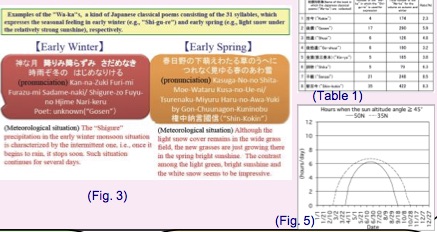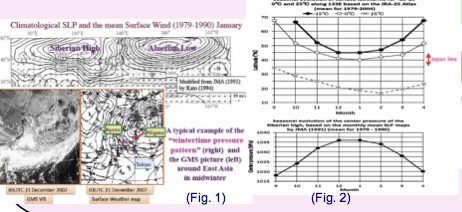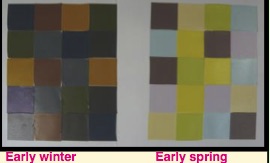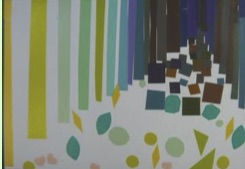Kuranoshin Kato is a Professor at the Graduate School on Education at Okayama, Japan. His expertise is on Meteorology and Climatology and he also researches original way to educate people on the matter. Together with Yuchi Haga they collaborated with Haruko Kato of the Lab of Music Education at the Faculty of Education in Gifu-City and Rikako Akagi of the Lab Of Art Education at Okayama University. The result was an interdisciplinary class project to express with the help of music and the use of colors the seasonal feeling linked to the rapid seasonal transition In East Asia. Rapid transitions are caused by the considerable phase differences of seasonal cycle among the Asian monsoon subsystems.
Climatological features during seasonal transition: some patterns reported in classic Japanese literature
The first step was to introduce to the students a brief summary on the climatological features in the season. This meteorological situation has inspired seasonal feeling reported in Japans classical literature: an outstaying example is the Japanese Classic Poem called “Wa-ka”. Students were invited to appreciate this parallelism.


(for a better view, click on the image and use the zoom in the browser)
Lectures on the climate system around East Asia
Before the date of 30 August 2013, the day in which 35 students were invited to express with their creativity the seasonal feelings linked to the seasonal transition in their country, Prof. Kuranoshin Kato gave specific lectures on some important features of the climate systems around East Asia including the detailed seasonal cycles. As a part of that lectures, the asymmetric seasonal march from autumn to the next spring around Japan was also explained.
Students in action
On the 30 of August. students tried the expression of the both selected stages in early winter and early spring, respectively, by combination of the 6 colors selected from the 96 colored papers, based on the Johannes Itten’s (1888-1967) exercise of the representation of the four seasons. Then, the students tried to express the seasonal feeling they firstly presented by the colors with use of the various small percussion instruments.


Finally, the degree of freedom for the color expression was increased giving the students the possibility to express themselves about the asymmetry between early winter and the early spring. The Art work was then, as in the former case, combined with music. It came out that the students’ expressions of the seasonal feeling seemed to be based not only on the mean seasonal state but also on a specified phase in the day-to-day variations embedded in the seasonal march, suggesting the possibility to use the art expression activity in the class for the study on the seasonal cycle of the climate systems with the various multi-scale aspects.

this page was readapted from the poster presentation at EGU 2015 EOS 7 session: